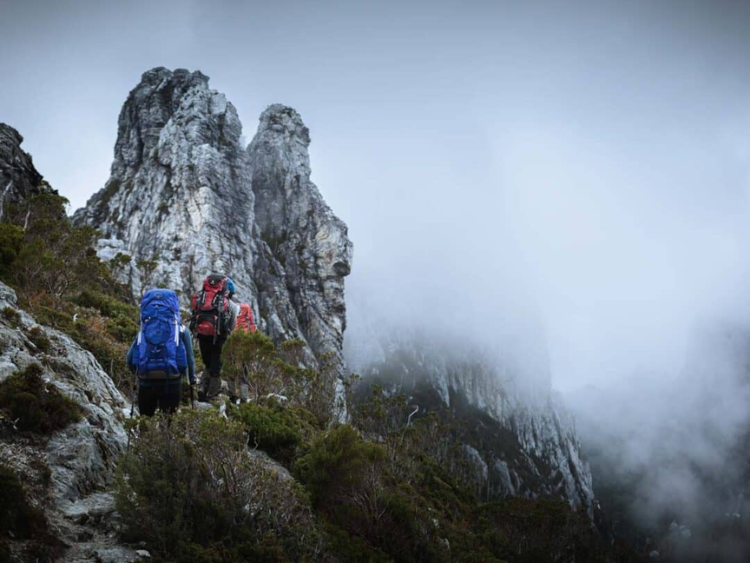
Southwest National Park is located in Tasmania, Australia. It's the largest national park in Tasmania, covering a vast and remote wilderness area in the southwest part of the state. The park encompasses a diverse range of landscapes, including rugged mountains, ancient forests, wild rivers, and pristine coastline.

Southwest National Park was initially established as a wildlife reserve in 1955. It was later expanded and reclassified as a national park to protect its unique wilderness and biodiversity. The park now covers an area of over 6,000 square kilometers, preserving some of Tasmania's most remote and untouched landscapes.

Southwest National Park in Tasmania was not "invented" by any single individual. Instead, it was established through government legislation and conservation efforts aimed at protecting the unique wilderness and biodiversity of the region. The park's creation involved input from various stakeholders, including government agencies, conservationists, and local communities.

Southwest National Park in Tasmania is named after its location in the southwestern part of the state. The name reflects its geographical position within Tasmania and distinguishes it from other national parks in the region. The park encompasses a vast and remote wilderness area characterized by rugged mountains, ancient forests, wild rivers, and pristine coastline, all of which are located in the southwest of Tasmania.




Southwest National Park in Tasmania is highly regarded by hiking enthusiasts for several reasons:
1. **Scenic Beauty**: The park boasts stunning landscapes, including rugged mountains, ancient forests, wild rivers, and pristine coastline. Hikers can enjoy breathtaking views and immerse themselves in the beauty of nature.
2. **Remote Wilderness**: Southwest National Park is one of the most remote and untouched wilderness areas in Tasmania. Hiking here offers a sense of solitude and adventure, away from crowds and urban development.
3. **Diverse Trails**: The park offers a variety of hiking trails catering to different skill levels and preferences. Whether you're looking for short walks or multi-day treks, there are options available to suit everyone.
4. **Biodiversity**: The park is home to a rich diversity of flora and fauna, including unique Tasmanian wildlife such as wombats, wallabies, and endemic bird species. Hikers may have the chance to encounter these animals in their natural habitat.
5. **Challenges and Rewards**: Some trails in Southwest National Park present challenges such as rugged terrain, river crossings, and unpredictable weather conditions. For experienced hikers, overcoming these challenges can be rewarding and provide a sense of accomplishment.
6. **Cultural and Historical Significance**: The park also has cultural and historical significance, with traces of Aboriginal heritage and early European exploration present in the landscape. Hikers can learn about the area's history while exploring its trails.
Overall, Southwest National Park offers a unique and unforgettable hiking experience for lovers of outdoor adventure and natural beauty.







While Southwest National Park in Tasmania is a fantastic hiking destination, the best time to hike there can vary depending on your preferences and the specific trails you plan to explore.
1. **Spring (September to November)**:
- Spring brings mild temperatures and blooming wildflowers, making it an excellent time for hiking.
- Trails may be less crowded compared to the peak summer season.
- However, weather can still be unpredictable, so be prepared for rain and sudden changes in conditions.
2. **Summer (December to February)**:
- Summer offers long daylight hours and generally pleasant weather, making it a popular time for hiking.
- Trails are usually drier and more accessible during this time.
- However, the park can get busy, especially during the holiday season, so popular trails may be crowded.
3. **Autumn (March to May)**:
- Autumn is another great time to hike in Southwest National Park, with cooler temperatures and beautiful foliage.
- The park is typically quieter compared to the summer months, offering a more tranquil hiking experience.
- Keep in mind that weather conditions can become more unpredictable as autumn progresses.
4. **Winter (June to August)**:
- Winter brings colder temperatures and the possibility of snowfall in higher elevations.
- Some trails may be inaccessible or more challenging due to snow and icy conditions.
- However, winter hiking can be rewarding for experienced hikers looking for solitude and unique snowy landscapes.
Ultimately, the best time to hike in Southwest National Park depends on your preferences, the specific trails you want to explore, and your comfort level with different weather conditions. It's essential to check weather forecasts, trail conditions, and any park advisories before embarking on your hike, regardless of the season.